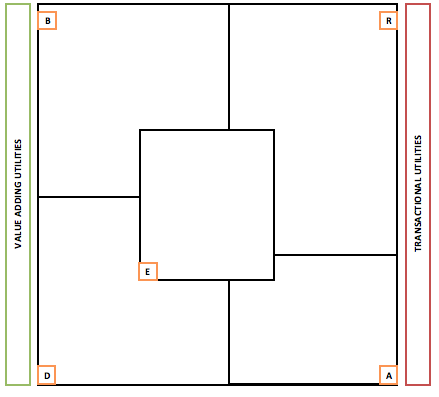 Regardless of mission or vision statements, the ultimate goal of any high-performing HR function — and or its “talent fulfillment” group — is to provide the support, resources, and expertise to help their organization acquire, develop, and retain top talent — a responsibility that starts with strategy, focuses on acquisition, and never ends.
Regardless of mission or vision statements, the ultimate goal of any high-performing HR function — and or its “talent fulfillment” group — is to provide the support, resources, and expertise to help their organization acquire, develop, and retain top talent — a responsibility that starts with strategy, focuses on acquisition, and never ends.
Talent fulfillment — the act of identifying, acquiring, and retaining top talent — can mean different things to different organizations and HR professionals. It could be hiring external recruitment agencies, temporary employees, contractors, or some combination thereof. That said, those organizations operating with that mindset, unless in the midst of a significant growth phase, aren’t likely to meet anyone’s definition of high performing. High performance means finding talent, growing talent, securing talent, and keeping talent — your organization’s own talent.
This is sort of like a short-order cook and a baker.
A short-order cook is working on the fly without regard for future planning other than the next ticket that pops up. They’re churning out order after order in the same fashion that underperforming HR/talent fulfillment functions churn out requisition after requisition and watch as turnover and retention move in the wrong direction along with ever-increasing expenses.
Consider that a short-order cook can sometimes get away with simply throwing ingredients into a pot, turning on the heat, and standing back — sometimes they’ll get lucky and something wonderful will turn out and the immediate needs of their clients will get met. If your organization takes a short-order approach to talent fulfillment, maybe you’ll get lucky and fill a position with a solid candidate. Or maybe not. More likely you’ll probably end up with a series of poor hires or potential great hires who don’t stick around long enough for you to find out what value they can bring to the organization.
A baker on the other hand requires more finesse to complete their work, and they have to approach the task at hand with a strategy … baking is part art, part science. A baker follows a clear recipe, and they take a measured and thoughtful approach. A good loaf of bread is much about the artisan as it is about the chemistry at play.
Talent fulfillment is like baking. Approaching the process with a strategy built on a framework that lends itself to helping your organization establish itself as an employer of choice all the way through retaining your top performers simply makes sense for anything more than the occasional talent fire drill.
The lesson: don’t be a cook, be a baker. Bake some BREAD and your organization will never go talent hungry again. The recipe for BREAD is simple at first glance, but the real nuance comes in how an organization puts it all together. The five key ingredients are:
Brand — Who you are, what you do, being an employer of choice, and telling the world (from the talent fulfillment perspective)
- Advertising, Networking, and Marketing
- Social Media
- Organizational Profile
- Web and Other Media
Recruit — Who you want, how you get them, and how you measure and show the value of the work internally
Sourcing —
- Sourcing Activities
- Metrics and Tracking
- Systems and Technology
- Processes and Paperwork
Engage — How you communicate, position, and tell your organization’s story to candidates, internal stakeholders, and those in a position to advance internally
- Culture
- Transparent and Accommodating Workflow
- Ongoing Communication
- Interview Process, Leadership Training, and Related Utilities
Acquire — Closing the deal, negotiating wages, benefits, and incentives, kick-starting the onboarding process
- Informed and Engaged Leadership
- Competitive Wages and Benefits
- Incentive Considerations
- Snapshot of Opportunities
Develop — Onboarding starts before the start date; it continues through the acclimation period and evolves into professional development over time.
- Employee Learning and Development
- Talent Reviews and Competency Modeling
- Succession Planning
- Career Planning
Now that you have the list of ingredients to bake your own talent acquisition success story, what’s your organizationally specific recipe going to look like? For some assistance in determining the right mix of this and that, check out the tool at the top of this post (click to enlarge).